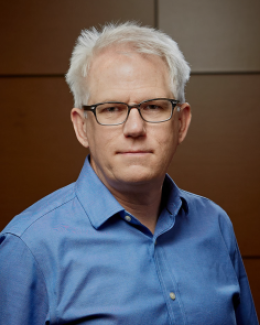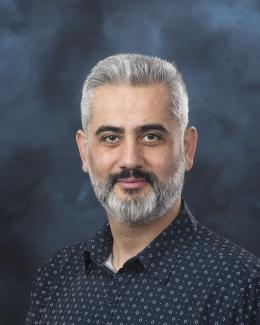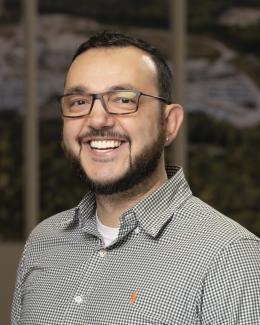Four research teams from the Department of Energy’s Oak Ridge National Laboratory and their technologies have received 2020 R&D 100 Awards.
In lieu of the traditional in-person event, this year’s R&D 100 winners were announced in online events Sept. 29 - Oct. 1, as part of the R&D 100 Conference and Awards.
Established in 1963, the R&D 100 recognizes new commercial products, technologies and materials from around the world for their technological significance. These new wins bring ORNL’s total R&D 100 Awards to 225 since the award’s inception.
“I am extraordinarily proud of the creative and dedicated teams behind these innovative technologies,” said ORNL Director Thomas Zacharia. “Being named among the R&D 100 is a reflection of the caliber of our staff’s work.”
ORNL researchers and technologies that have been named winners include:
Amanzi-ATS, submitted by Los Alamos National Laboratory and co-developed with ORNL.
This powerful and adaptable simulation software provides an avenue for holistic analysis of complex environmental systems.
Environmental systems are immensely intricate collections of interdependent subsystems that ebb, flow, and interact with each other, with small changes in one part impacting other factors as well. Amanzi-ATS provides a flexible, comprehensive open-source software solution that can be quickly adapted to model environmental systems across scales, addressing problems ranging from climate change impacts to contaminant mitigation.
Funding for this project was provided by the DOE Office of Science Biological and Environmental Research Program, the DOE Office of Environmental Management and laboratory directed research funds from ORNL and LANL.
ORNL’s Ethan Coon, Ahmad Jan and Scott Painter contributed to the development along with David Moulton and Rao Garimella at LANL and the broader Amanzi-ATS team at LANL, Lawrence Berkeley National Laboratory and Pacific Northwest National Laboratory.
Biomacromolecule Engineering by Soft Chain Coupling Technology, developed by ORNL.
Polylactic acid, or PLA, is a commonly used bioplastic and its biocompatibility, biocompostability, high strength and stiffness make it ideal for use in biomedical devices, films, packaging and 3D printing. However, its brittle nature limits its use in many applications.
ORNL researchers have developed a biomacromolecule soft-coupling technology that improves the ductility and toughness of PLA through a melt-phase process that creates droplets in the polymer microstructure, increasing its toughness up to 20 times compared to the original polymer. This process gives PLA the properties of ductility and super-toughness without sacrificing its tensile strength.
Funding for this project was provided by the DOE Energy Efficiency and Renewable Energy, Advanced Manufacturing Office.
Soydan Ozcan led the ORNL development team which included Halil Tekinalp, Kai Li, Yu Wang, and Xiangtao Meng.
ChemSitu Microfluidic Technology for In Situ Mass Spectrometric Characterization of Microfluidic Devices, developed by ORNL.
The convergence of microfluidics and biology has produced numerous “biology”-on-a-chip devices that mimic organs, vascular networks and plant-microbe systems, enabling exploration of dynamic biochemical processes. But current devices provide only limited spatial and chemical information.
ORNL’s ChemSitu analysis approach allows in situ quantifiable chemical characterization at any location within the microfluidic device. Analyte is extracted into a flowing solvent probe and characterized by mass spectrometry – allowing for measurement of hundreds of molecules simultaneously.
Enabling mass spectrometry to characterize living biology in microfluidic systems for the first time, ChemSitu’s location-specific chemical profiling may prove invaluable in studying molecular transport across biological interfaces, which is important in toxicology and pharmacology.
Funding for the project came from the DOE Office of Science Biological and Environmental Research, Bioimaging Science Program.
The ORNL team was led by John Cahill and included Vilmos Kertesz and Scott Retterer.
Cobalt-Free Li-ion Battery Cathode Material, developed by ORNL and Sparkz.
Cobalt is a rare, costly and difficult-to-access metal that increases the performance but reduces the safety of lithium-ion batteries found in consumer electronics such as mobile devices and in electric vehicles. The metal is used in a battery’s cathode, the positively charged end that determines much of a battery’s performance.
ORNL researchers have developed a cobalt-free cathode material for use in lithium-ion batteries made with nickel, iron, and aluminum (NFA) in the place of cobalt. The material exhibits electrochemical properties similar to cobalt and demonstrates comparable performance. NFA cathodes can replace cobalt-containing cathodes at a lower-cost, while maintaining performance and creating minimal disruption to the lithium-ion manufacturing process.
Funding for this project was provided by the DOE Energy Efficiency and Renewable Energy, Vehicle Technologies Office.
Ilias Belharouak led the ORNL portion of the development team which included ORNL’s Nitin Muralidharan, Rachid Essehli, Jagjjt Nanda, Mohammad Khaleel; and Sparkz’s Sanjiv Malhotra.
UT-Battelle manages ORNL for the Department of Energy’s Office of Science, the single largest supporter of basic research in the physical sciences in the United States. The Office of Science is working to address some of the most pressing challenges of our time. For more information, please visit energy.gov/science.
With additional reporting from Jennifer Burke and Dawn Levy.











